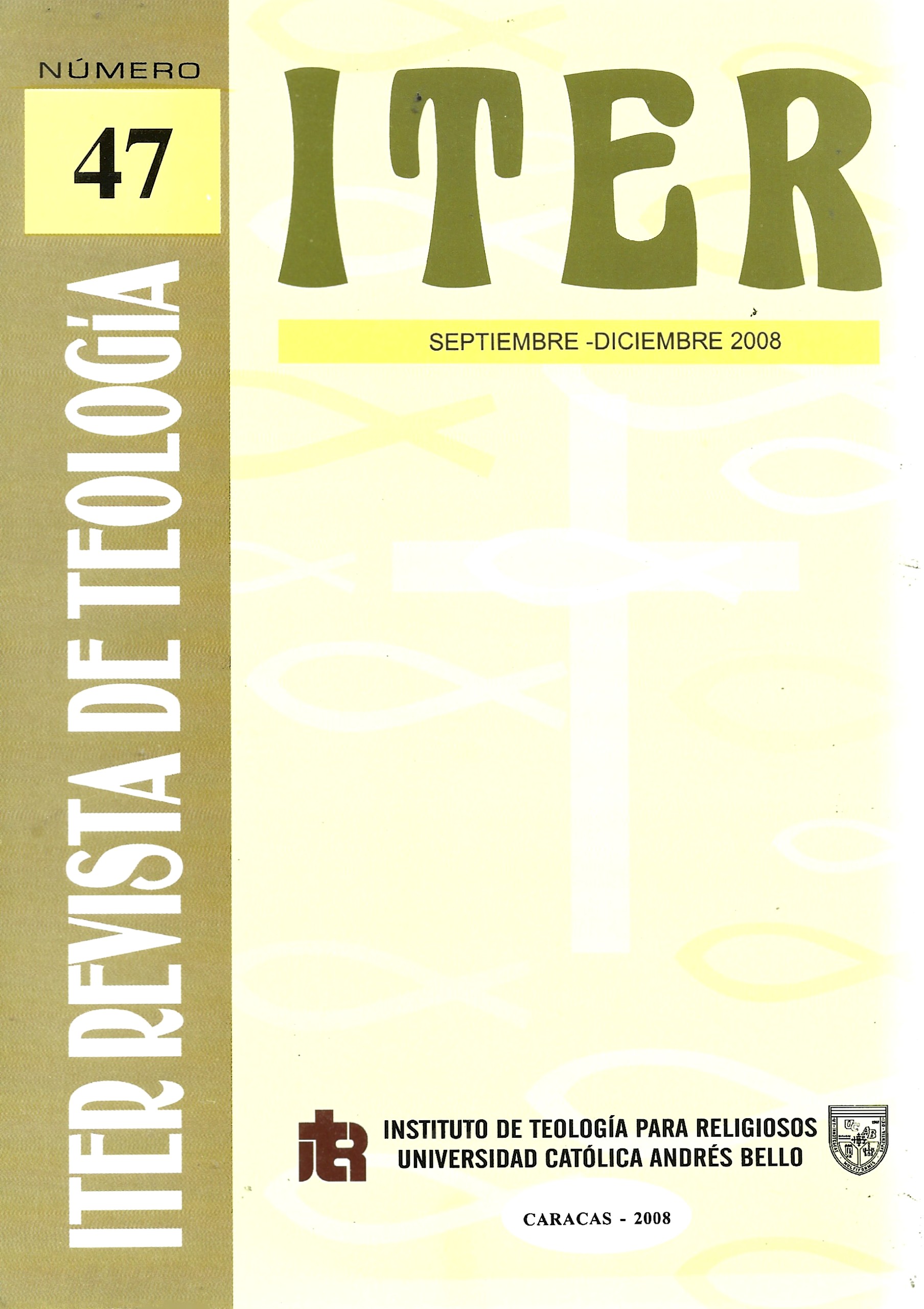CRITERIOS PARA LA LECTURA DEL DOCUMENTO DE APARECIDA
EL PRE-TEXTO, EL CON-TEXTO Y EL TEXTO
Palabras clave:
hermeneutics, inductive method, pretext-context-text, ecclesiastic reality, not self-criticism, Latin American tradition, disciples missionaries, option for the poor, protagonism of woman.Resumen
-- Sorne criteria are presented to be kept in mind when reading the Aparecida Document (DA). They are grouped around three pales that make up the task of interpretation of any text: the "pre-text" (the juncture of the text), the "con-text" (the authors and coauthors of the text) and the 'text' (the document itself). It does not remain at the leve[ of theoretical principies, but it tries to land and apply them to the Vth Conference, in its 'befare', its 'during' and its 'after'. In arder to achieve this, sorne quotations of the Documentare presented in the footnotes. When reading the DA, and considering the "pre-text", we must bear in mind two different moments. The first moment, "befare" the text, which took place during the entire preparation process. The second is the moment "during" which the text of the DA was written; this moment was the event itself of the assembly with their celebrations and debates, the exercise of bishop's collegiality, and the procedures for the elaboration of a text. Here these aspects were considered: the preparation process, the reassertion of Latin American tradition, the critica[ position against globalization, but without going into its causes, and th'e good reading of the ecclesial reality, but without historie self-criticism. It is necessary to take into consideration the following, for an adequate reading of a text: its "con-text", that is, its authors and co-authors; they are closely linked to the text. Indeed, we understand a text better when we know who were its authors, and with whom they interacted and how they worked. Finally we have the 'text', but only with the purpose of providing criteria for readership; it is not necessary here to present the contents of the text. These features of the text are analyzed: a text fruit of arrangements, not always agreed upon; recovery of the inductive method; the main transversal thrusts or themes of the DA, the main ones are about six. Finally five novelties of the DA are identified: a Church in a permanent state of mission; not exclusive and in a world perspective; poverty as a world of insignificance; those who go to other Christian groups and the protagonism ofwomen. At the end a Decalogue is established that helps reflection and that can generate actions, leading to make the Church the sacrament of salvation.
Descargas
Archivos adicionales
Publicado
Número
Sección
Licencia
Derechos de autor 2025 ITER Revista de Teología

Esta obra está bajo una licencia internacional Creative Commons Atribución-NoComercial-SinDerivadas 4.0.

